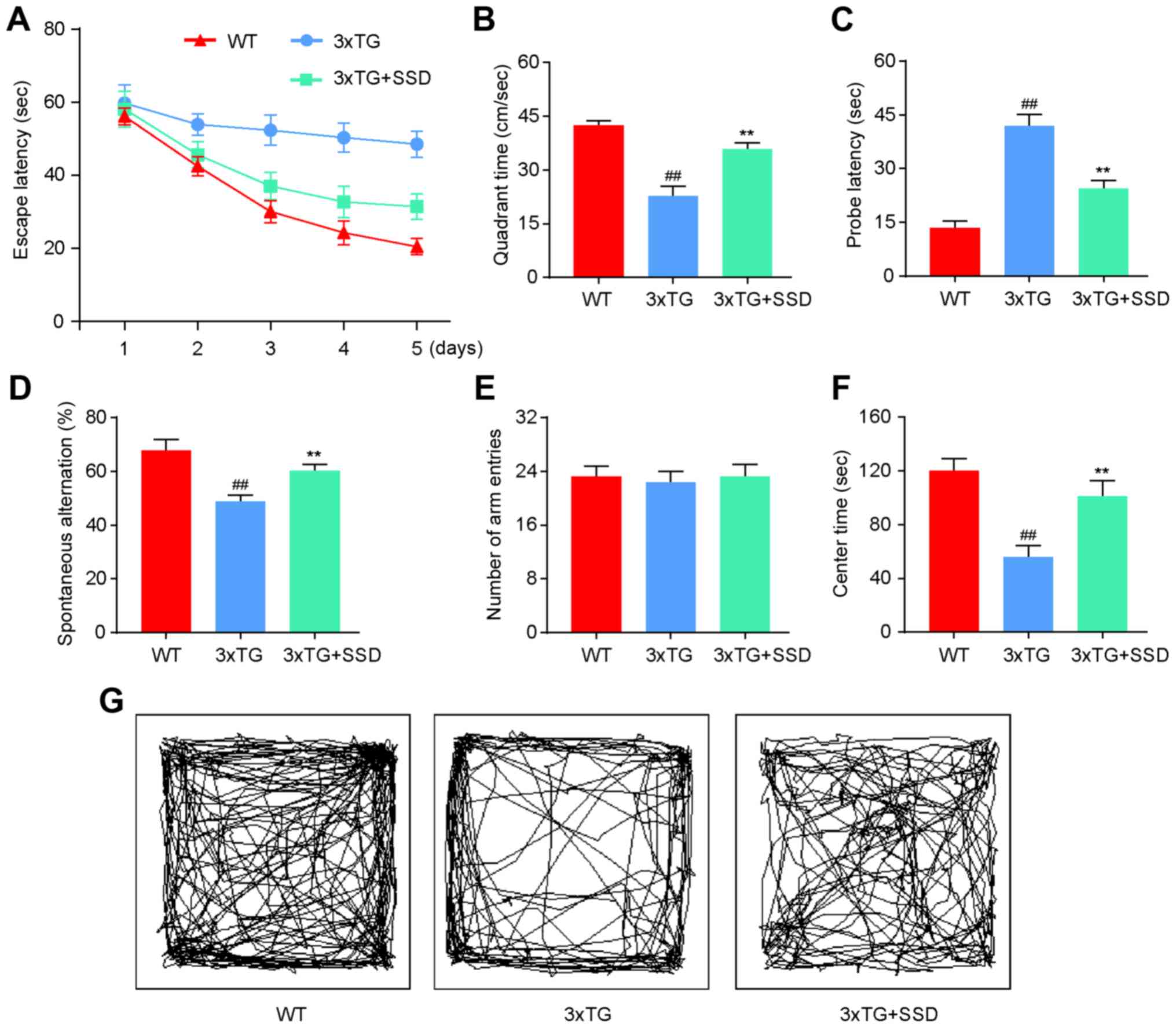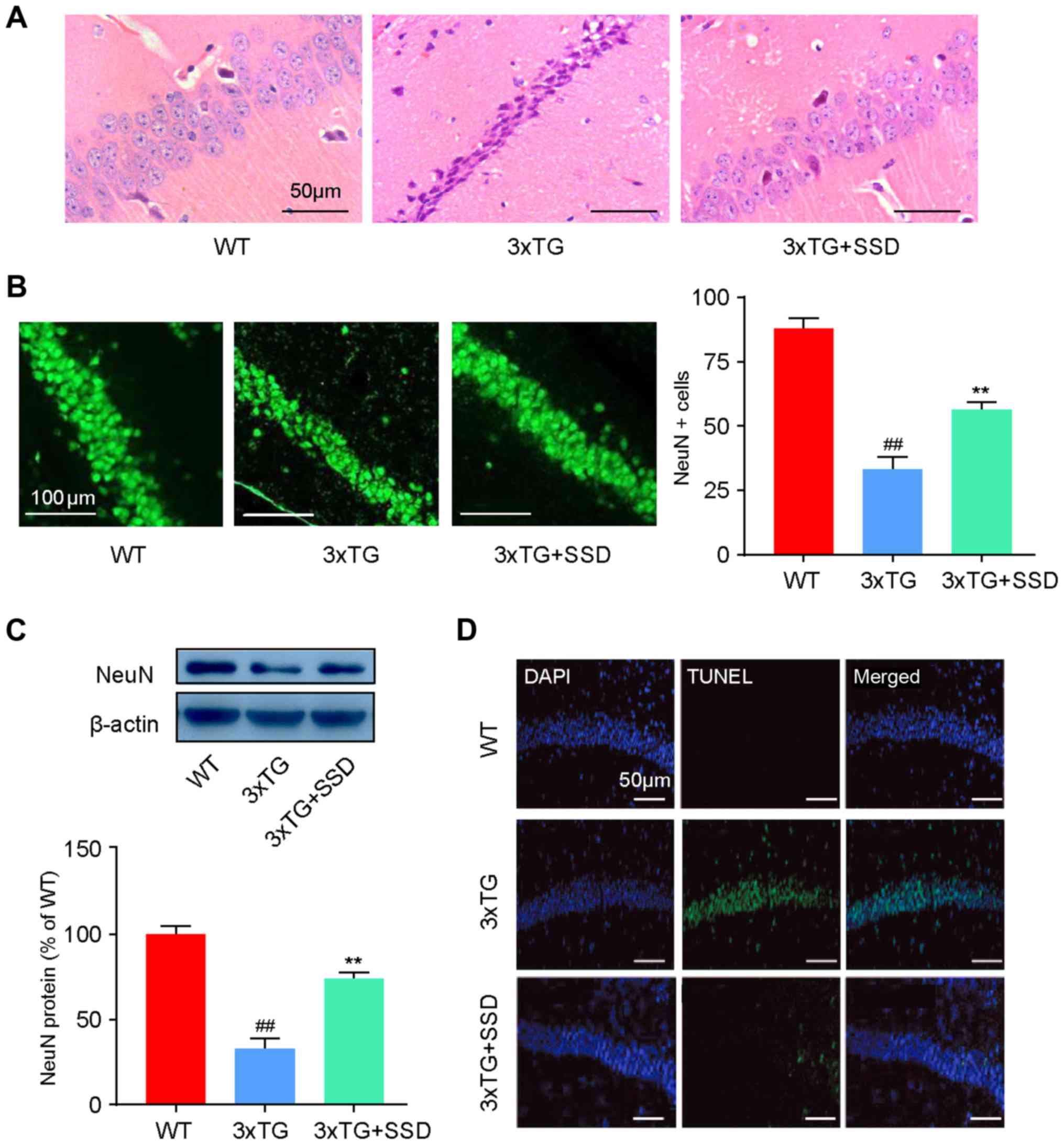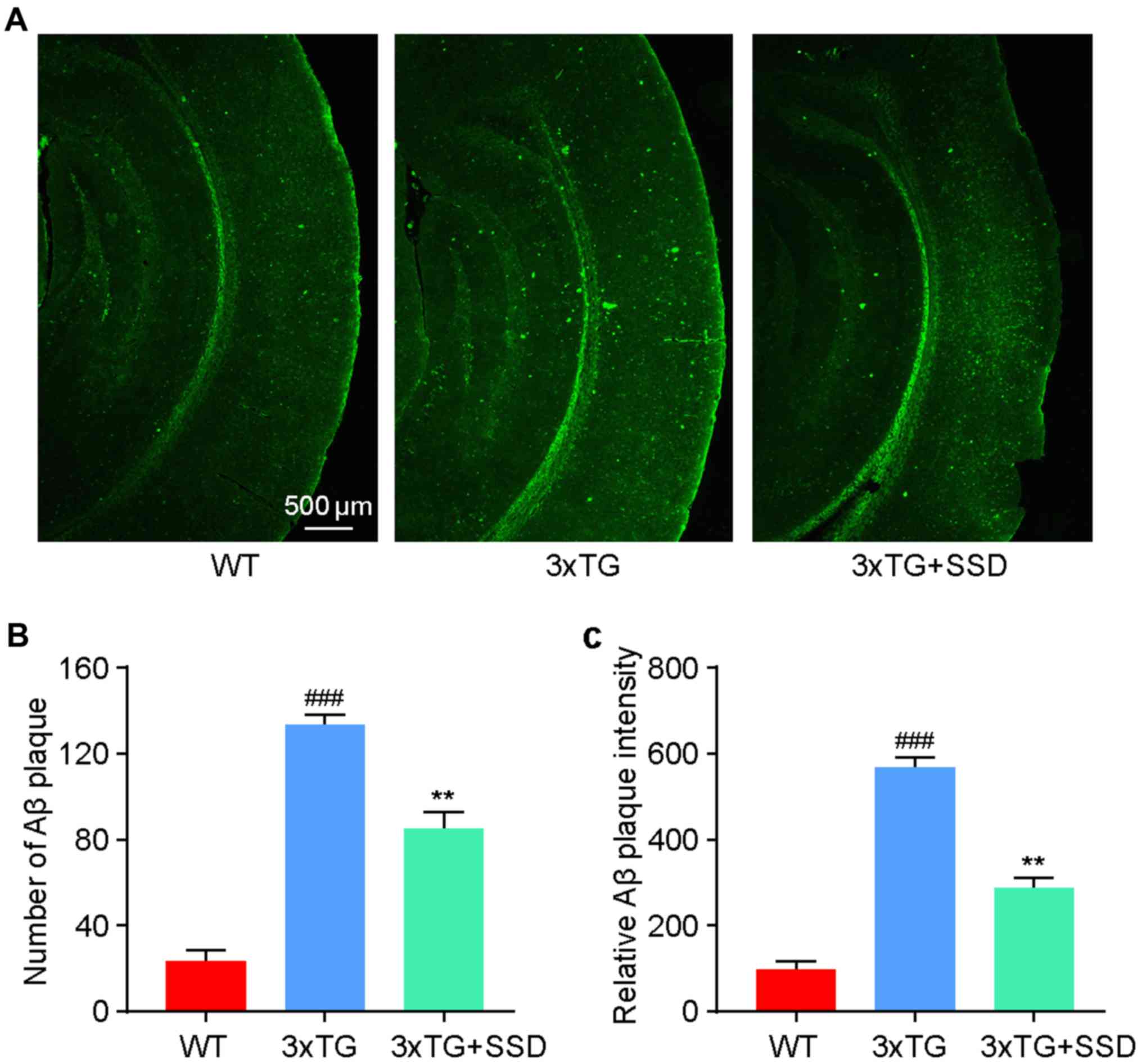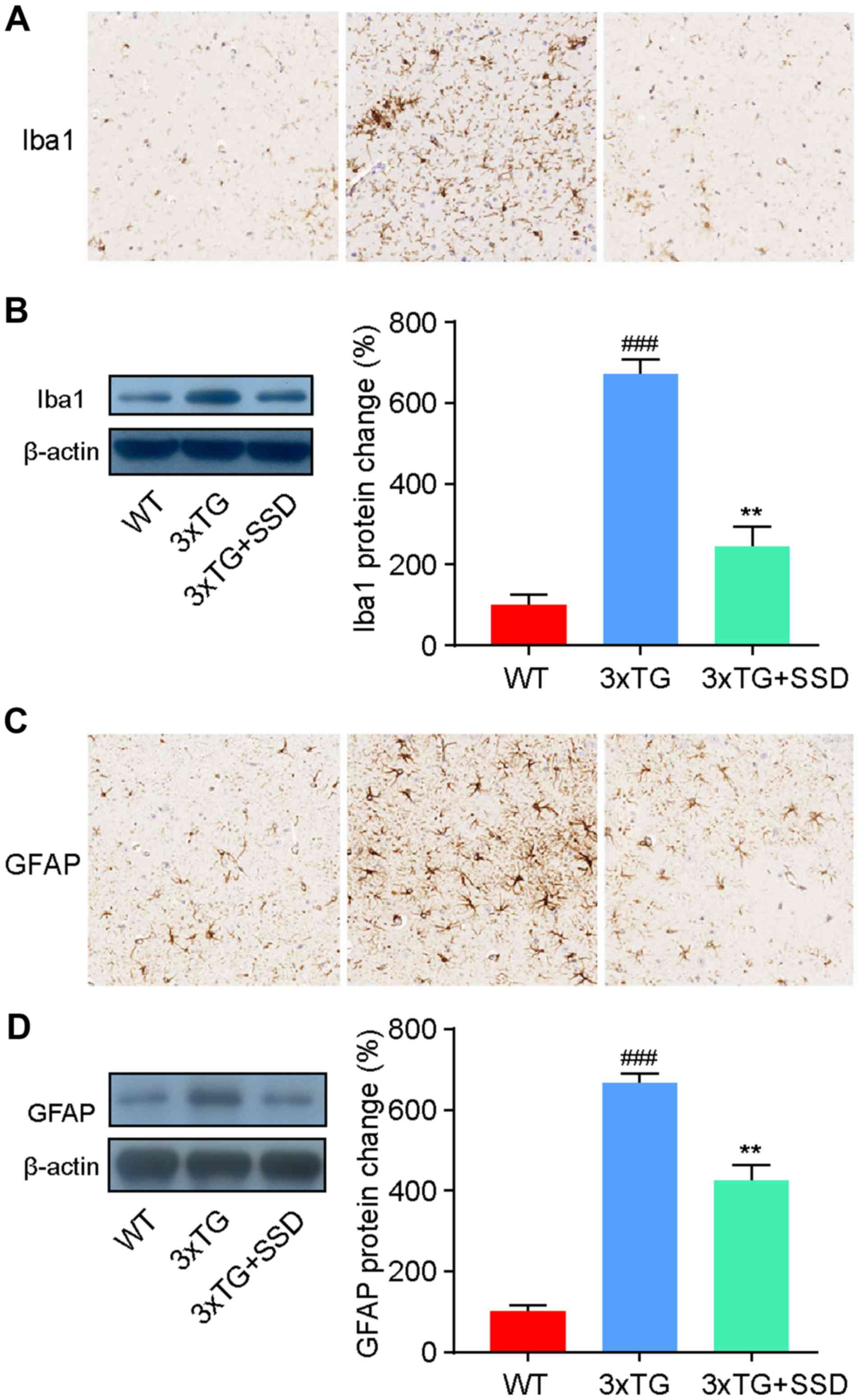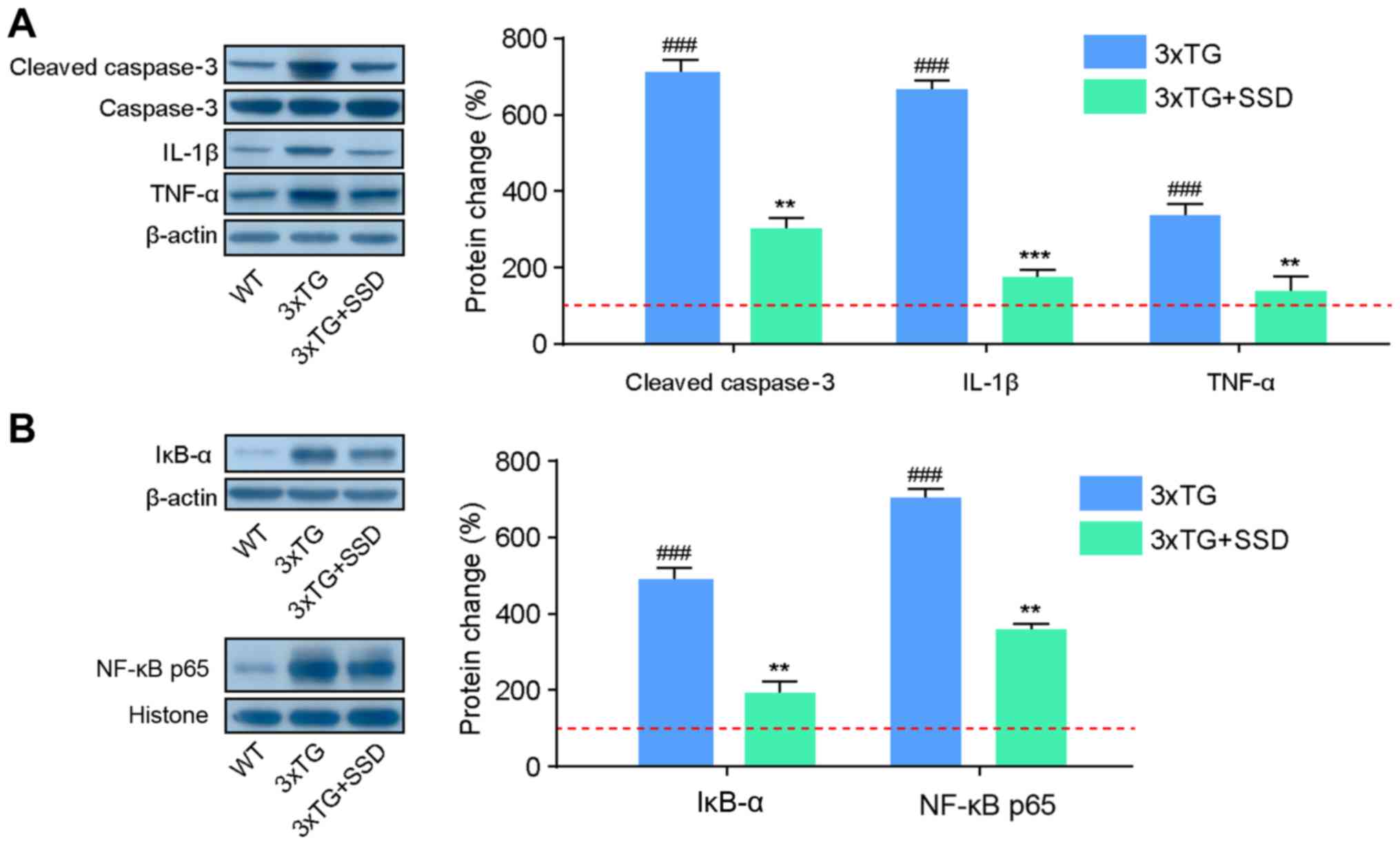|
1
|
Ballard C, Gauthier S, Corbett A, Brayne
C, Aarsland D and Jones E: Alzheimer's disease. Lancet.
377:1019–1031. 2011.PubMed/NCBI View Article : Google Scholar
|
|
2
|
Hampel H, Prvulovic D, Teipel S, Jessen F,
Luckhaus C, Frölich L, Riepe MW, Dodel R, Leyhe T, Bertram L, et
al: The future of Alzheimer's disease: The next 10 years. Prog
Neurobiol. 95:718–728. 2011.PubMed/NCBI View Article : Google Scholar
|
|
3
|
Selkoe DJ: The molecular pathology of
Alzheimer's disease. Neuron. 6:487–498. 1991.PubMed/NCBI View Article : Google Scholar
|
|
4
|
Ashton NJ, Leuzy A, Lim YM, Troakes C,
Hortobágyi T, Höglund K, Aarsland D, Lovestone S, Schöll M, Blennow
K, et al: Increased plasma neurofilament light chain concentration
correlates with severity of post-mortem neurofibrillary tangle
pathology and neurodegeneration. Acta Neuropathol Commun.
7(5)2019.PubMed/NCBI View Article : Google Scholar
|
|
5
|
LeBlanc AC, Papadopoulos M, Bélair C, Chu
W, Crosato M, Powell J and Goodyer CG: Processing of amyloid
precursor protein in human primary neuron and astrocyte cultures. J
Neurochem. 68:1183–1190. 1997.PubMed/NCBI View Article : Google Scholar
|
|
6
|
Gong J, Liu M, Xu S, Jiang Y, Pan Y, Zhai
Z, Luo Q, Yang L and Wang Y: Effects of light deficiency on the
accumulation of saikosaponins and the ecophysiological
characteristics of wild Bupleurum Chinense DC. In China. Industrial
Crops Products. 99:179–188. 2017.
|
|
7
|
Yen FL, Wang SW, Cheng HL, Chen KL and
Chen YL: Determination of saikosaponins in bupleuri radix by
micellar electrokinetic chromatography with experimental design.
Anal Lett. 51:1–14. 2018.
|
|
8
|
Dang SS, Wang BF, Cheng YA, Song P, Liu ZG
and Li ZF: Inhibitory effects of saikosaponin-d on CCl4-induced
hepatic fibrogenesis in rats. World J Gastroenterol. 13:557–563.
2007.PubMed/NCBI View Article : Google Scholar
|
|
9
|
Li XQ, Song YN, Wang SJ, Rahman K, Zhu JY
and Hong Z: Saikosaponins: A review of pharmacological effects. J
Asian Nat Prod Res. 20:399–411. 2018.PubMed/NCBI View Article : Google Scholar
|
|
10
|
Li Y, Cai T, Zhang W, Zhu W and Lv S:
Effects of saikosaponin D on apoptosis in human U87 glioblastoma
cells. Mol Med Rep. 16:1459–1464. 2017.PubMed/NCBI View Article : Google Scholar
|
|
11
|
Sun X, Li X, Pan R, Xu Y, Wang Q and Song
M: Total saikosaponins of bupleurum yinchowense reduces depressive,
anxiety-like behavior and increases synaptic proteins expression in
chronic corticosterine-treated mice. BMC Complement Altern Med.
18(117)2018.PubMed/NCBI View Article : Google Scholar
|
|
12
|
Lee TH, Park S, You MH, Lim JH, Min SH and
Kim BM: A potential therapeutic effect of saikosaponin C as a novel
dual-target anti-Alzheimer agent. J Neurochem. 136:1232–1245.
2016.PubMed/NCBI View Article : Google Scholar
|
|
13
|
Ali J, Khan AU, Shah FA, Ali H, Islam SU,
Kim YS and Khan S: Mucoprotective effects of Saikosaponin-A in
5-fluorouracil-induced intestinal mucositis in mice model. Life
Sci. 239(116888)2019.PubMed/NCBI View Article : Google Scholar
|
|
14
|
Cotman CW and Anderson AJ: A potential
role for apoptosis in neurodegeneration and Alzheimer's disease.
Mol Neurobiol. 10:19–45. 1995.PubMed/NCBI View Article : Google Scholar
|
|
15
|
Li N and Karin M: Signaling pathways
leading to nuclear factor-kappa B activation. Methods Enzymol.
319:273–279. 2000.PubMed/NCBI View Article : Google Scholar
|
|
16
|
Zhang MY, Katzman R, Salmon D, Jin H, Cai
GJ, Wang ZY, Qu GY, Grant I, Yu E, Levy P, et al: The prevalence of
dementia and Alzheimer's disease in Shanghai, China: Impact of age,
gender, and education. Ann Neurol. 27:428–437. 1990.PubMed/NCBI View Article : Google Scholar
|
|
17
|
Mizuno K, Wakai M, Takeda A and Sobue G:
Medial temporal atrophy and memory impairment in early stage of
Alzheimer's disease: An MRI volumetric and memory assessment study.
J Neurol Sci. 173:18–24. 2000.PubMed/NCBI View Article : Google Scholar
|
|
18
|
Knight EM, Martins IV, Gümüsgöz S, Allan
SM and Lawrence CB: High-fat diet-induced memory impairment in
triple-transgenic Alzheimer's disease (3xTgAD) mice is independent
of changes in amyloid and tau pathology. Neurobiol Aging.
35:1821–1832. 2014.PubMed/NCBI View Article : Google Scholar
|
|
19
|
Giménezllort L, Arranz L, Maté I and De la
Fuente M: Gender-specific neuroimmunoendocrine aging in a
triple-transgenic 3xTg-AD mouse model for Alzheimer's disease and
its relation with longevity. Neuroimmunomodulation. 15:331–343.
2008.PubMed/NCBI View Article : Google Scholar
|
|
20
|
Wilson RS, Barnes LL, Mendes de Leon CF,
Aggarwal NT, Schneider JS, Bach J, Pilat J, Beckett LA, Arnold SE,
Evans DA and Bennett DA: Depressive symptoms, cognitive decline,
and risk of AD in older persons. Neurology. 59:364–370.
2002.PubMed/NCBI View Article : Google Scholar
|
|
21
|
Chemerinski E, Petracca G, Manes F,
Leiguarda R and Starkstein SE: Prevalence and correlates of anxiety
in Alzheimer's disease. Depress Anxiety. 7:166–170. 1998.PubMed/NCBI View Article : Google Scholar
|
|
22
|
Chadwick W, Mitchell N, Caroll J, Zhou Y,
Park SS, Wang L, Becker KG, Zhang Y, Lehrmann E, Wood WH III, et
al: Amitriptyline-mediated cognitive enhancement in aged 3xTg
Alzheimer's disease mice is associated with neurogenesis and
neurotrophic activity. PLoS One. 6(e21660)2011.PubMed/NCBI View Article : Google Scholar
|
|
23
|
Xiao AW, He J, Wang Q, Luo Y, Sun Y, Zhou
YP, Guan Y, Lucassen PJ and Dai JP: The origin and development of
plaques and phosphorylated tau are associated with axonopathy in
Alzheimer's disease. Neurosci Bull. 27:287–299. 2011.PubMed/NCBI View Article : Google Scholar
|
|
24
|
Janus C, Pearson J, McLaurin J, Mathews
PM, Jiang Y, Schmidt SD, Chishti MA, Horne P, Heslin D, French J,
et al: A beta peptide immunization reduces behavioural impairment
and plaques in a model of Alzheimer's disease. Nature. 408:979–982.
2000.PubMed/NCBI View
Article : Google Scholar
|
|
25
|
Mondragón-Rodríguez S, Perry G, Zhu X and
Boehm J: Amyloid beta and tau proteins as therapeutic targets for
Alzheimer's disease treatment: Rethinking the current strategy. Int
J Alzheimers Dis. 2012(630182)2012.PubMed/NCBI View Article : Google Scholar
|
|
26
|
Sailasuta N, Harris K, Tran T and Ross B:
Minimally invasive biomarker confirms glial activation present in
Alzheimer's disease: A preliminary study. Neuropsychiatr Dis Treat.
7:495–499. 2011.PubMed/NCBI View Article : Google Scholar
|
|
27
|
Chalour N, Maoui A, Rat P, Massicot F,
Dutot M, Faussat AM, Devevre E, Limb A, Warnet JM, Treton J, et al:
AβPP-induced UPR transcriptomic signature of glial cells to
oxidative stress as an adaptive mechanism to preserve cell function
and survival. Curr Alzheimer Res. 15:643–654. 2018.PubMed/NCBI View Article : Google Scholar
|
|
28
|
Meda L, Baron P and Scarlato G: Glial
activation in Alzheimer's disease: The role of Abeta and its
associated proteins. Neurobiol Aging. 22:885–893. 2001.PubMed/NCBI View Article : Google Scholar
|
|
29
|
Calsolaro V and Edison P:
Neuroinflammation in Alzheimer's disease: Current evidence and
future directions. Alzheimers Dement. 12:719–732. 2016.PubMed/NCBI View Article : Google Scholar
|
|
30
|
Wright AL, Zinn R, Hohensinn B, Konen LM,
Beynon SB, Tan RP, Clark IA, Abdipranoto A and Vissel B:
Neuroinflammation and neuronal loss precede Aβ plaque deposition in
the hAPP-J20 mouse model of Alzheimer's disease. PLoS One.
8(e59586)2013.PubMed/NCBI View Article : Google Scholar
|
|
31
|
Song Y, Qu R, Zhu S, Zhang R and Ma S:
Rhynchophylline attenuates LPS-induced pro-inflammatory responses
through down-regulation of MAPK/NF-κB signaling pathways in primary
microglia. Phytother Res. 26:1528–3315. 2012.PubMed/NCBI View
Article : Google Scholar
|
|
32
|
Li J, Biswas S, Niu Y, Li WQ, Sun N, Miao
ZH and Yao Y: P23 Saikosaponin a ameliorate learning and memory
impairment via anti-inflammation effect in an AD mouse model.
Biochem Pharmacol. 139(132)2017.
|
|
33
|
Gemma C, Bachstetter AD, Cole MJ, Fister
M, Hudson C and Bickford PC: Blockade of caspase-1 increases
neurogenesis in the aged hippocampus. Eur J Neurosci. 26:2795–2803.
2007.PubMed/NCBI View Article : Google Scholar
|
|
34
|
Chen CH, Zhou W, Liu S, Deng Y, Cai F,
Tone M, Tone Y, Tong Y and Song W: Increased NF-κB signalling
up-regulates BACE1 expression and its therapeutic potential in
Alzheimer's disease. Int J Neuropsychopharmacol. 15:77–90.
2012.PubMed/NCBI View Article : Google Scholar
|
|
35
|
Kaur U, Banerjee P, Bir A, Sinha M, Biswas
A and Chakrabarti S: Reactive oxygen species, redox signaling and
neuroinflammation in Alzheimer's disease: The NF-κB connection.
Curr Top Med Chem. 15:446–457. 2015.PubMed/NCBI View Article : Google Scholar
|
|
36
|
Zhong H, Voll RE and Ghosh S:
Phosphorylation of NF-kappa B p65 by PKA stimulates transcriptional
activity by promoting a novel bivalent interaction with the
coactivator CBP/p300. Mol Cell. 1:661–671. 1998.PubMed/NCBI View Article : Google Scholar
|
|
37
|
Madrid LV, Wang CY, Guttridge DC,
Schottelius AJ, Baldwin AS Jr and Mayo MW: Akt suppresses apoptosis
by stimulating the transactivation potential of the RelA/p65
subunit of NF-kappaB. Mol Cell Biol. 20:1626–1638. 2000.PubMed/NCBI View Article : Google Scholar
|
|
38
|
Murshed F, Farhana L, Dawson MI and
Fontana JA: NF-κB p65 recruited SHP regulates PDCD5-mediated
apoptosis in cancer cells. Apoptosis. 19:506–517. 2014.PubMed/NCBI View Article : Google Scholar
|
|
39
|
Liao Y, Qi XL, Cao Y, Yu WF, Ravid R,
Winblad B, Pei JJ and Guan ZZ: Elevations in the levels of NF-κB
and inflammatory chemotactic factors in the brains with Alzheimer's
disease-one mechanism may involve α3 nicotinic acetylcholine
receptor. Curr Alzheimer Res. 13:1290–1301. 2016.PubMed/NCBI View Article : Google Scholar
|
|
40
|
Aisen PS and Davis KL: Inflammatory
mechanisms in Alzheimer's disease: Implications for therapy. Am J
Psychiatry. 151:1105–1113. 1994.PubMed/NCBI View Article : Google Scholar
|
|
41
|
Gao J, Zhou R, You X, Luo F, He H, Chang
X, Zhu L, Ding X and Yan T: Salidroside suppresses inflammation in
a D-galactose-induced rat model of Alzheimer's disease via
SIRT1/NF-κB pathway. Metab Brain Dis. 31:771–778. 2016.PubMed/NCBI View Article : Google Scholar
|
|
42
|
Huang C, Wang J, Lu X, Hu W, Wu F, Jiang
B, Ling Y, Yang R and Zhang W: Z-guggulsterone negatively controls
microglia-mediated neuroinflammation via blocking IκB-α-NF-κB
signals. Neurosci Lett. 619:34–42. 2016.PubMed/NCBI View Article : Google Scholar
|















